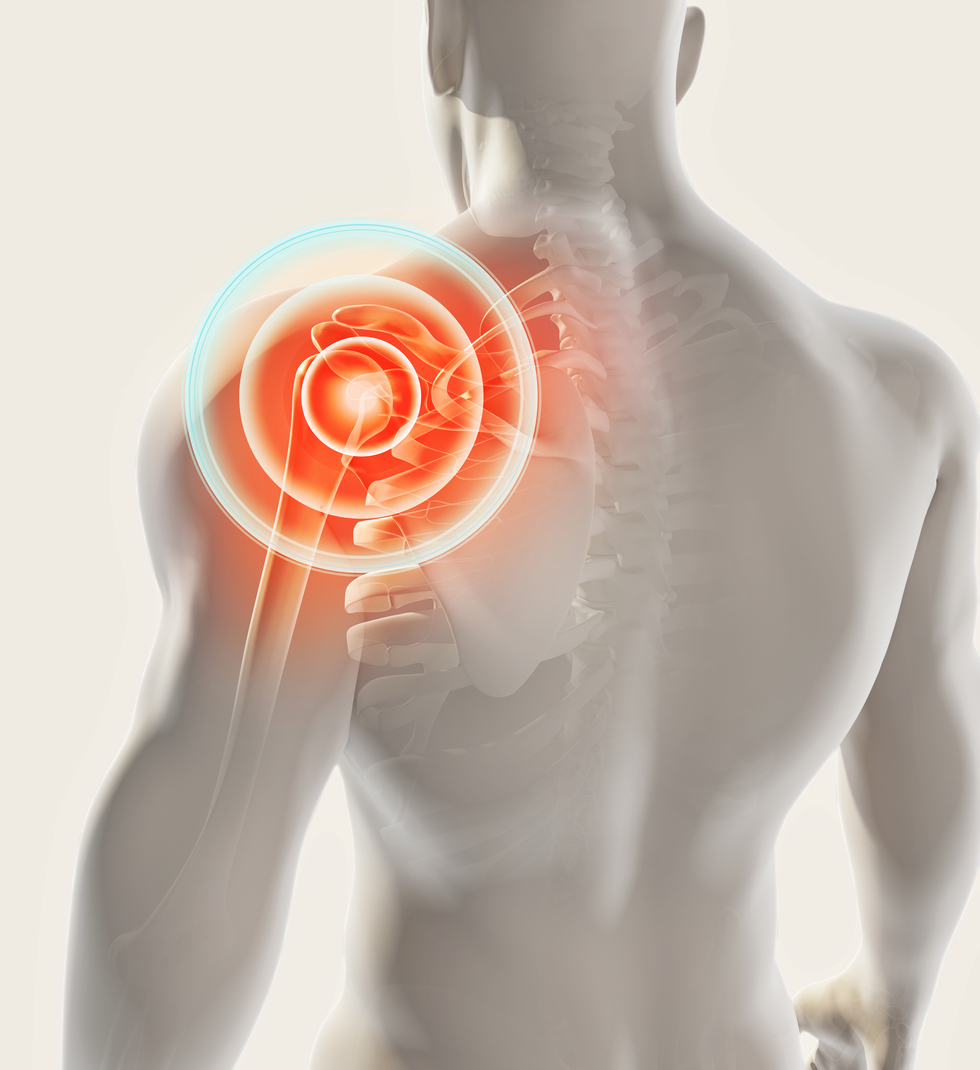Pain
Understanding Shoulder and Neck Pain

Shoulder and neck pain often occur simultaneously. This is because the neck and shoulder are connected by numerous nerve pathways. Therefore, shoulder problems can cause neck pain, and neck issues can result in shoulder pain. The pain can range from mild to severe.
Causes of shoulder and neck pain
An exact diagnosis of the underlying condition is needed to obtain an appropriate treatment plan. Common causes of both shoulder and neck pain include the following:
- Cervical herniated disc, or slipped or ruptured disc, occurs when the spinal discs degenerate. Discs are rubbery cushions that sit between individual vertebrae. This can occur at any point of the spine.
- Cervical spondylosis is a degenerative disorder that causes loss of normal spinal function. As the spine begins to degenerate with age, one or more of the openings where the spinal nerves exit the spinal canal may become smaller. This can result in a compressed or inflamed spinal nerve, which can cause radiating pain.
- Muscle strain can be experienced in only the neck or the shoulder, but pain may be referred to other areas. Several muscles connect to both the shoulder and neck; therefore, pain from a strained muscle can be experienced in both locations.
- Stinger injury, or burner, results when the nerves between the neck and shoulder become overstretched. This is usually caused by an injury and may result in pain shooting down the arm.
Less common causes include the following:
- Thoracic outlet syndrome, (TOS) is a condition in which the nerves and/or blood vessels in the thoracic outlet become compressed, irritated or injured. The thoracic outlet is a narrow space located between the collarbone and the first rib.
- Brachial neuritis is inflammation of nerves in the brachial plexus, which is a group of nerves that travel through the shoulder from the lower neck and upper back. It typically begins suddenly and is felt on one side of the body in the shoulder, arm, or neck.
- Cervical myofascial pain syndrome is a condition in which sensitive knots (trigger points) develop in one or more muscles. If pressure is applied in the neck, it can radiate into the shoulder.
- Osteoarthritis (OA) involves the gradual breakdown of cartilage in one or more joints. When the protective cushioning of cartilage deteriorates, the bones in the joint eventually rub together, causing inflammation and pain.
- Fibromyalgia involves widespread muscle pain (myalgias) and joint pain (arthralgias). It is thought to be related to abnormal processing of pain signals in the nervous system.
Is the neck causing shoulder pain?
Neck pain has various causes and symptoms. If the neck is causing shoulder pain, the most common symptoms include pain that:
- Radiates to the shoulder blade or side of the neck.
- Is stabbing, burning, electric-like, or tingling.
- Persists during rest.
- Is relieved with neck support.
- Radiates down the arm when extending or twisting the neck.
- Is experienced past the elbow or into the hand.
Is the shoulder causing neck pain?
The shoulder is a ball-and-socket joint that allows for an extensive range of motion, making it very susceptible to injury. The most common cause of shoulder pain is rotator cuff injuries. Symptoms indicating the shoulder is the cause of neck pain include pain that:
- Is dull and aching.
- Develops in the shoulder or outside the upper arm.
- Improves when resting the arm.
- Radiates into the upper arm; however, it does not go past the elbow.
- Occurs when reaching overhead or behind the back.
- Ensues when lifting.
- Is persistent at night.
Diagnosing shoulder and neck pain
There are a variety of tests that can determine the source of shoulder and neck pain. A health care professional will gather a medical history, perform a physical examination, and may conclude with testing, such as the following:
- Electrodiagnostic Tests
Electromyography (EMG) and nerve conduction velocity (NCV) tests can pinpoint the source of pain and numbness. - X-rays
An X-ray allows physicians to see growths, strains, fractures, slipped discs, or narrowing bone canals that are causing the pain. - MRI
Magnetic Resonance Imaging (MRI) can highlight damage or issues with nerves and tendons.

















